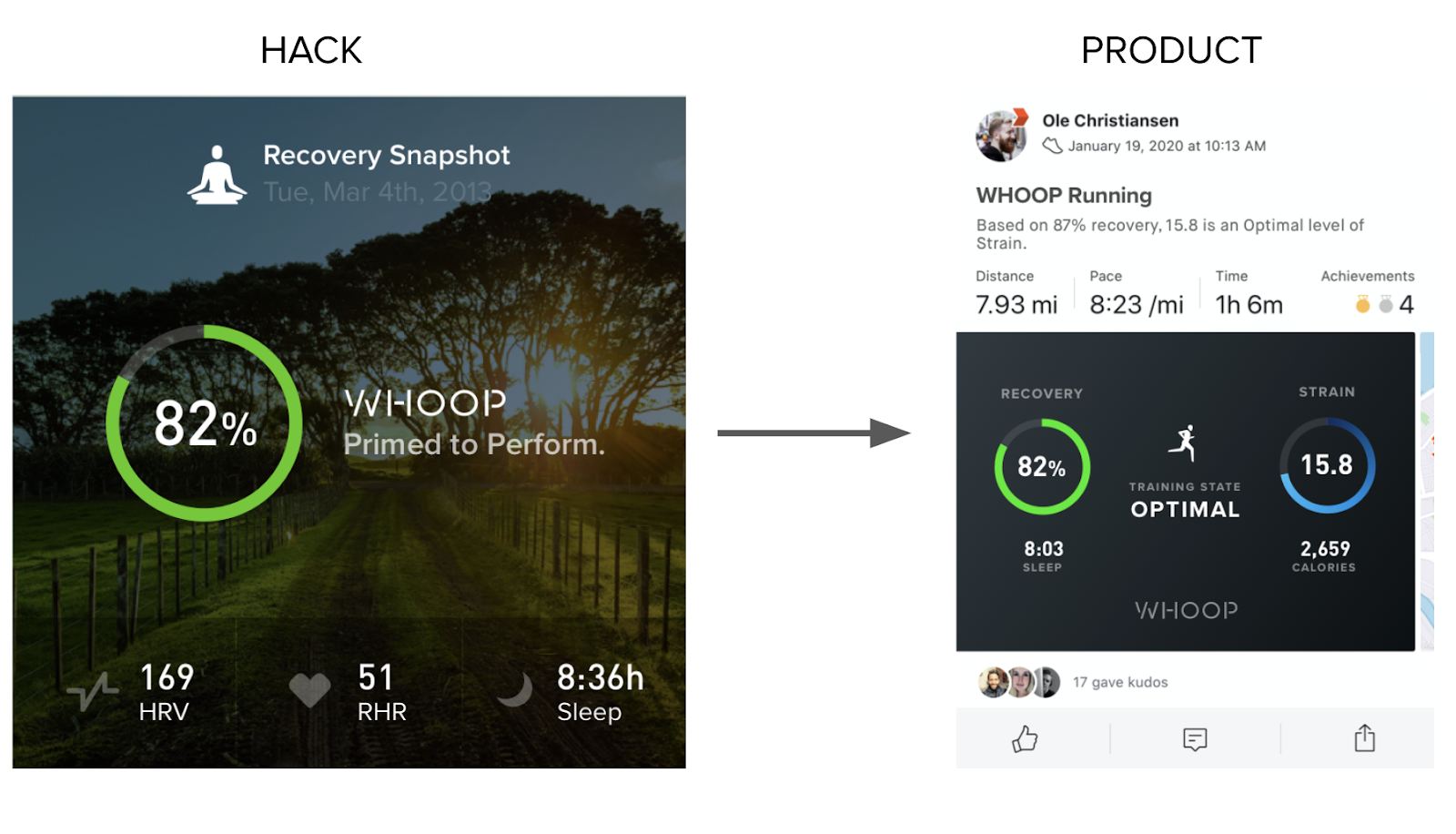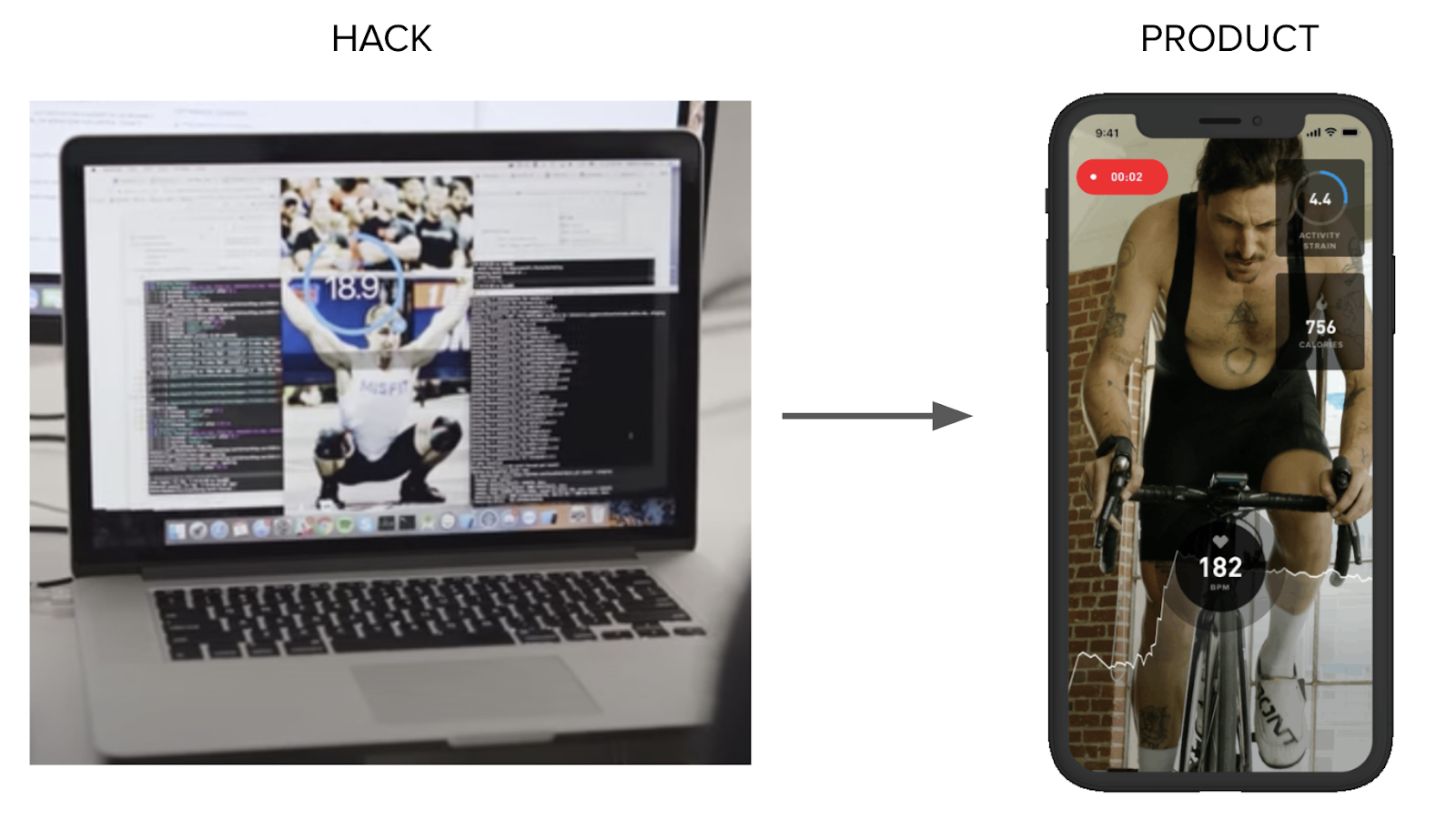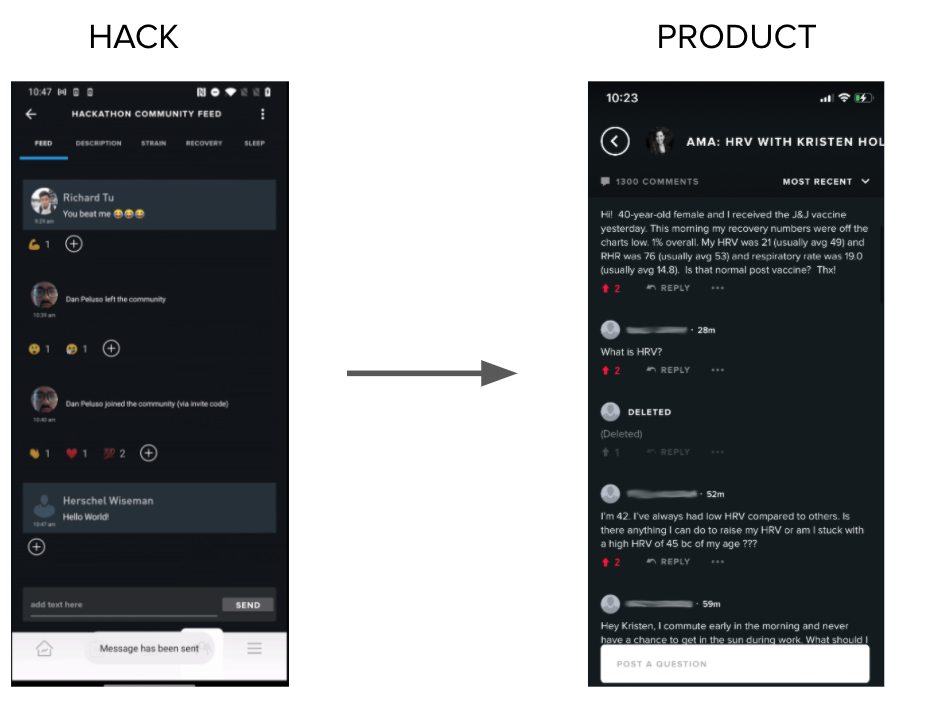Last November 2020, our Software, Product, and Data Science teams had a Hack Day (aka hackathon) with amazing results. This event was not easy to pull off especially with everyone working from home. In this post, we will go over the planning, setup, execution, and results to provide a glimpse into how our culture of creativity and collaboration led to blowing away all our expectations.
Background
If you are unfamiliar with what a Hack Day is, this event is a day where WHOOP product engineers come together, form an idea, and create a functioning demo all in one day. We’re firm believers that product ideas can come anywhere and Hack Day lets our individual contributors take on leadership roles that they might not otherwise get at this point in their careers. The main outcome for WHOOP is a tangible demo that can influence the direction of the company.
Our previous hackathon had two ideas that eventually made it to our product that our members love today. The first hack was the winner of the event where WHOOP employees voted unanimously for the “Strava Integration”. Below is a quick snapshot of what the hack looked like and what the product looks like now.

The second hack involved diving into how WHOOP approaches social media with “WHOOP Selfie”. At that time, we knew the industry was moving more and more into Facebook, Snapchat, and Instagram allowing people to tell compelling stories about themselves. The hack itself involved exploring the tech around enabling people to tell stories leveraging their WHOOP data. Below is a snapshot of the initial hack and what we had in the product when we launched WHOOP 3.0.

After seeing two prior hacks turned into fully developed production features, our engineers were excited to compete again to turn their ideas into reality. From here, it was time to run another Hack Day and let our engineers show off their product ideas.
Planning & Setup
Our event was lightly themed with four categories: Growth, Retention, Thought Leadership, and Engineering. These categories were not enforced but instead they were suggested to help set the tone and direction. We also planned to have the event on Friday and give the demos on Monday to have a popular vote to determine a winner. With help from Elliot Franford and Ehlana Gray, two of our Software Tech Leads, we were able to organize and assist with providing guides on how to get started particularly if the engineer was unfamiliar with a different technical domain. For example, Elliot set up a handy starter guide for different platforms such as iOS, Android, backend, and web. Ehlana hosted a session to foster ideas and to help groups refine ideas and test feasibility. From here, we were ready to start the hacks.
Hack Day
Given the event was remote, we had initial concerns of how effective a hackathon would be over calls. The teams leveraged Slack, Zoom, and Discord open calls to keep communication going throughout the event to help each other make their idea into a demo. It was important to check-in with each of the teams proactively to see how things were going but specifically to provide advice if the team was stuck. I also recommend checking in near the end of the event in order to gauge and assist teams to get to a demo state. It’s also important to reiterate to start thinking of what would be demoed and who would help facilitate. As part of our culture, we also want to make sure all the contributors to the project are recognized.
Results
The next work day after the Hack Day, we had all the participating teams present their demos. All the 14 demos spanned across the product and the engineers even predicted some of the things that were coming to help with our Company Goals. I’m incredibly proud that our engineers were able to showcase their product engineering mindset in order to float ideas, start conversations, and hopefully make it into production. Having actual tangible products where people can get a feel for what it could be as opposed to just having wireframes can steer WHOOP to providing continuous values to our members.
After the demos, we had an internal popular vote and there was a clear winner, Community Feed/Chat. The team members which consisted of one full-time backend developer and two mobile co-ops received a trophy each and a discussion on how to proceed forward with getting their idea to our members. Within a couple of months, the WHOOP team began working to get the basic idea to our members. We’re proud to announce that we just launched the feature called Ask Me Anything ( AMA) where we leverage some of the hack backend and productionalized it for our members. Check out the picture below to see how it evolved.

Given how widespread the event got to the rest of the company, other teams were selected to talk more about their idea and determine how to get their idea into the product roadmap. We cannot go into more details but many others are planned out to come out in 2021. If you were to join WHOOP, you will likely get to work on them. Check out open positions to learn more and get to see how engineers are impacting WHOOP and the lives of our members.